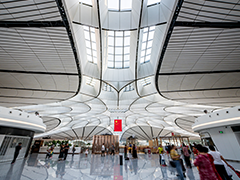Incomplete interpretation of the sound reinforcement system
- Categories:Industry News
- Time of issue:2021-06-03 15:40
- Views:
(Summary description)The sound reinforcement system can be divided into several categories according to the purpose of use...
Incomplete interpretation of the sound reinforcement system
(Summary description)The sound reinforcement system can be divided into several categories according to the purpose of use...
- Categories:Industry News
- Time of issue:2021-06-03 15:40
- Views:

1. Sound reinforcement system: The speaker and the microphone are in the same sound
field, and there are audible, distortion and oscillation phenomena caused by acoustic feedback and room resonance. To ensure system stability and normal operation, the highest available system gain is 6 dB lower than the critical gain of the acoustic feedback self-excitation.
2. Sound system: There are only sound sources such as tape drives and CD players in the system. There is no microphone, there is no acoustic feedback, and the acoustic feedback coefficient is 0, which is a special case of the sound reinforcement system.
Sound reinforcement audio systems can be divided into the following categories according to their uses:
1) Outdoor sound reinforcement system
The outdoor sound reinforcement system is mainly used in stadiums, stations, parks, art squares, music fountains, etc. It is characterized by large service area, wide space and large background noise; the sound transmission is mainly direct sound; the required sound pressure level is high, if there are acoustic reflection objects such as high-rise buildings, the speaker layout is not reasonable, the sound wave is Multiple reflections and more than 50ms delay will cause double or multiple sounds. In severe cases, echoes and other problems will occur, affecting the clarity and sound image localization of the sound. The acoustics of outdoor systems are also affected by climatic conditions, wind direction and environmental disturbances.
2) Indoor sound reinforcement system
The indoor sound reinforcement system is the most widely used system, including various theaters, stadiums, dance halls and so on. Its professionalism is very strong, it can not only use non-verbal sound reinforcement, but also can be used for all kinds of cultural performances, and has high requirements on sound quality. System design must consider not only electro-acoustic technology issues, but also architectural acoustics. Factors such as the shape of the room have a greater impact on sound quality.
3) Mobile performance system
The sound reinforcement system has a flow system in addition to the fixed installation system. It is commonly used in various large-scale venues [such as stadiums (halls), art broadcasts, and large-scale banquet halls]. The system for temporary installation of non-literary performances is called the mobile performance system. The audio equipment of the mobile performance must be compact, easy to carry, transport and install, highly reliable and adaptable to a variety of demanding environments. Large-scale mobile systems are heavily invested and are usually leased to professional audio companies.
4) Public address system
The public address system provides background music and radio programs for hotels, commercial buildings, ports, airports, subways, and schools. In recent years, the public broadcasting system has also served as an emergency broadcast, which can be linked with the fire alarm system. The public address system has many control functions, such as the selection broadcast and full call broadcast function, the forced switching function, and the priority broadcast right function. The speaker has a large load and is dispersed, and the transmission line is long. In order to reduce the transmission line loss, 70V or 100V constant voltage and high impedance transmission are generally adopted. Sound pressure level requirements are not high, and the sound quality is dominated by midrange and mid-high.
5) Conference system
With the increase of domestic and international exchanges, teleconferences, video conferences and digital conference systems (DCN) have developed rapidly in recent years. Conference systems are widely used in conference centers, hotels, groups, and government agencies.
The conference system includes a conference discussion system, a voting system, a simultaneous interpretation system, and a video teleconferencing system. The audio and video (image) systems are required to be synchronized, and all computer controlled and stored conference materials are used.
Scan the QR code to read on your phone
Related News

OBT WeChat

OBT Mobile Website
Copyright © Shenzhen OBTPA Technology Co.,Ltd. 粤ICP备18028288号





